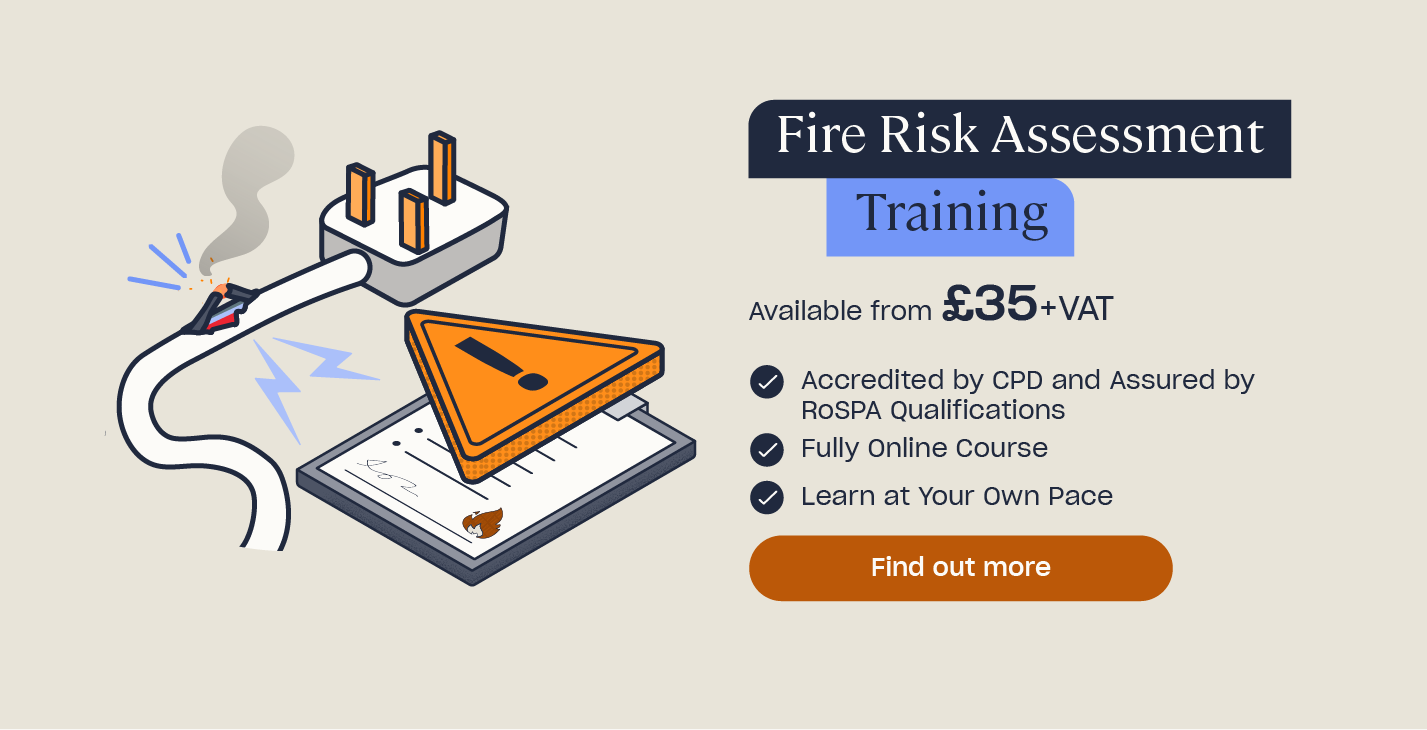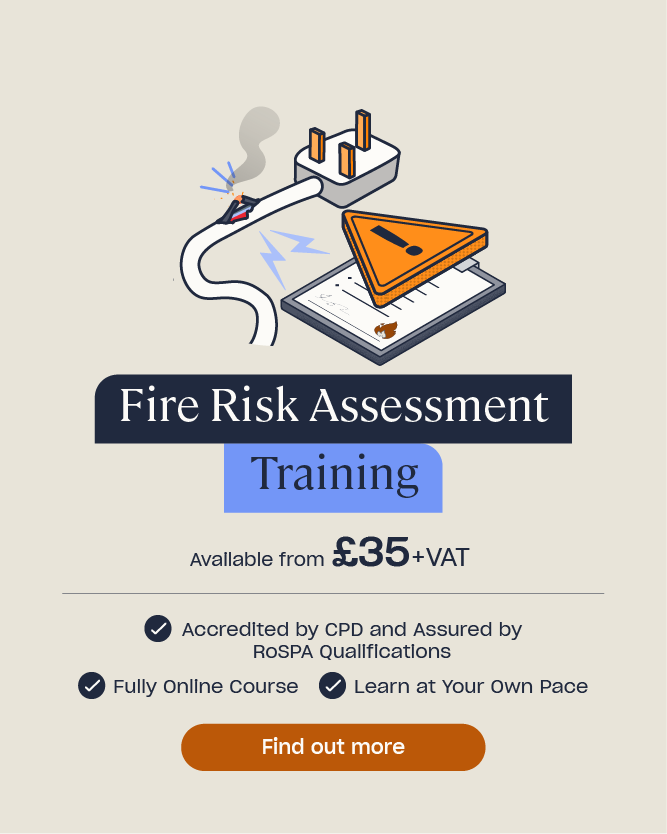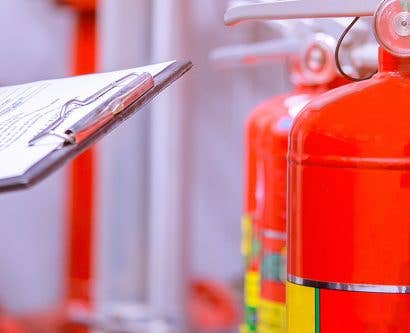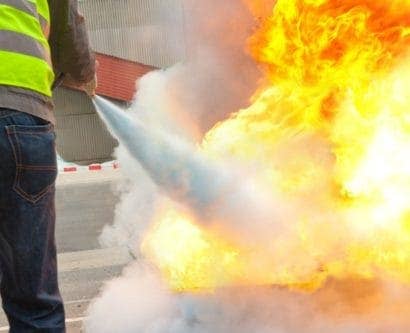Fire Safety Rules and Regulations in the Workplace
It’s easy to forget the fire risk when working in an office environment. It can seem unlikely due to the absence of significant heat sources and naked flames, especially when compared to spaces like commercial kitchens. However, it is essential to remember that offices carry risks requiring careful management to prevent a fire from breaking out and causing severe consequences, jeopardising the business or, worse, risking lives.
In this article, we will look at who is responsible for fire safety in the workplace, the regulations and responsibilities of those responsible, as well as some workplace fire prevention rules.
Who is Responsible for Fire Safety in the Workplace?
Ensuring fire safety in the workplace is a shared responsibility, with specific roles assigned to different individuals. The UK Government’s guidelines state that primary responsibility lies with a key figure who, in most cases, is one of the following:
- An employer.
- The owner of the premises.
- The landlord.
- An occupier.
- Anyone else with control of the premises, for example, a facilities manager, building manager, managing agent or risk assessor.
These individuals, known as responsible persons, are designated to oversee the day-to-day implementation of fire safety measures, including maintaining firefighting equipment, organising regular fire drills, and ensuring that all occupants are familiar with evacuation procedures.
Employees also play a crucial role in fire safety compliance and vigilance, following established fire safety procedures, participating in training programs, and promptly reporting potential hazards, all of which are vital to maintaining safety.
Need a Fire Warden Training Course?
In some cases, the company will designate a fire warden. Our Fire Warden Training Course will provide you with the necessary theoretical training required to be a qualified fire warden
Fire Safety Regulations in the Workplace
There are comprehensive fire safety regulations in place for workplaces to safeguard both employees and premises. Understanding and adhering to these regulations is vital to maintaining a safe working environment and minimising the risk of fire-related incidents.
The responsible person, such as the employer or owner of the premises, must play an essential role in managing fire risks. The official government website lists the following crucial aspects that responsible persons must perform:
- Carrying out a fire risk assessment of the premises and reviewing it regularly.
- Informing staff or their representatives about the risks they identify.
- Implementing and maintaining appropriate fire safety measures.
- Having a plan for a fire emergency.
- Providing staff information, instruction and training around fire safety.
The government also offers a collection of guidance materials for those with legal duties for workplace fire safety covering specific measures required for compliance. This includes the provision of suitable firefighting equipment, regular risk assessments, and the establishment of clear evacuation procedures.
You can learn more about how to create a fire safety evacuation plan in our article here.

Fire Prevention Rules for the Workplace
There are a number of rules you can implement in your workplace to reduce the risk of fire. These are outlined below.
Heating
- Avoid using open electrical bar heaters or halogen-type heaters – oil-filled (radiant) radiators are a safer alternative.
- Avoid placing heaters near flammable objects or under desks.
- Keep heaters clear of any blinds/curtains/furnishings, etc.
- Ensure that heaters with time switches are not set to automatically come on at certain times, as they might do when people are out of the office.
- Set a reminder to turn heaters off before you leave the office.
- Ensure you have a heater that automatically switches off if it topples over.
- Look out for staining or discolouration of the appliance or surroundings, and discontinue using the heater if you see any. The same goes for any strange smells.
Cooking
- Do not leave food unattended during preparations.
- Ensure you switch off equipment, e.g. an oven or microwave, after use.
- Keep tea towels and other flammable materials away from the stove or other heated appliances.
- Ensure the oven, stove, and grill are kept clean, as a build-up of fat and food debris can cause a fire.
- Do not place anything metal in microwaves.
- Do not use microwaves as an additional surface (this blocks the air vents).
Smoking
- Make sure you fully extinguish cigarettes and discard them properly.
- Keep an eye on cigarette bins and empty them if they get too full (or notify whoever is responsible for doing so).
Electrical
- Ensure electrical equipment has a suitable conformity marking indicating it has been manufactured to safety standards. As a result of Brexit, Great Britain (England, Scotland and Wales) is in a transition period with regard to conformity marking and conformity assessment of products being manufactured or supplied for sale in Great Britain. All new PPE supplied in Great Britain must be marked with the appropriate conformity marking (UKCA or CE before the deadline for UKCA implementation) or be accompanied by documentation marked with it. There are different requirements for Northern Ireland.
- Follow the manufacturer’s instructions when using a device/piece of equipment.
- Use official chargers and cables for devices and equipment.
- Don’t leave appliances charging unsupervised for a long time.
- Don’t charge a battery that looks damaged.
- Don’t cover up items when charging, as they emit heat, and keep them away from flammable materials.
- Don’t leave appliances and equipment running overnight or when no one is in the office; make sure they are properly switched off and don’t have timer settings activated that could make them come back on when no one’s around.
- Don’t overload sockets – outlets, extension leads, and adaptors have a limit to how many amps they can take.
- Keep an eye out for burn marks or stains around plug sockets, which suggest overheating.
- Keep an eye out for frayed or worn cables and wires.
- Keep an eye out for flickering lights, blown fuses, or circuit-breakers that trip for no apparent reason.
- Always switch off your equipment at the mains when it’s not in use and unplug where appropriate.
- Always ensure that damaged cable sections are properly replaced – don’t simply repair them with insulating tape.
- Report faulty equipment and take it out of use immediately.
Waste build-up
- Keep walkways and fire exit routes clear of flammable materials, such as cardboard boxes, paper, fabrics, etc.
- Make sure it is correctly disposed of/recycled away from the premises.
A fire hazard could develop at any time. As well as following these rules, remember to look out for any new fire hazards by performing a daily check of your workplace.
You can learn more fire safety tips by reading our article Top 10 Fire Safety Tips in the Workplace.
Remember, everyone plays a part in keeping their office safe, and following these simple prevention rules will help to ensure that no one has to face the flames of a fire or its devastating after-effects.
Further Resources:
- Fire Safety Quiz
- Information about the Fire Triangle & Tetrahedron
- Understanding the Different Types and Uses of Fire Extinguishers
- What Does PASS Stand For? Fire Extinguisher Use and Safety
- Workplace Health and Safety Quiz for Employees
- Fire Extinguisher Quiz
- Fire Safety Signs
- Fire Risk Assessment Template
- The Fire Safety Responsibilities of a Fire Warden
- Fire Risk Assessment Training









